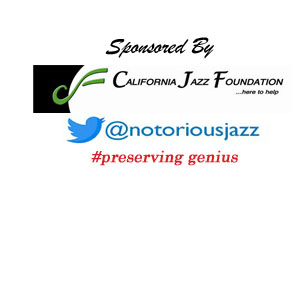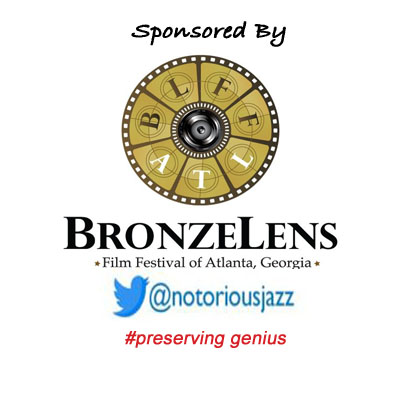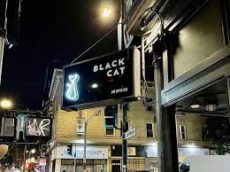
The Jazz Voyager
I love hanging out on the West Coast in San Francisco, California. Having flown in last week to listen to jazz, this Jazz Voyager stayed and revisited some favorite haunts and discovered some spots that weren’t there decades ago.
So happily I will be in the audience of an old haunt, the Black Cat Supper Club. It’s a swanky two level jazz lounge and cocktail bar that offers live music along with a variety of small plates.
This week they are presenting Nicholas Payton & New World Order. I don’t know what music he will be bringing but as a long time fan I am looking forward to hearing whatever it is.
As a leading voice in jazz, the 2x Grammy winning and 5x Grammy nominee, the multi-instrumentalist, vocalist, composer, producer, arranger, essayist and social activist, he defies musical and artistic categories.
Black Cat is located at 400 Eddy Street 94109. Get more info by visiting the Jazz Calendar at https://notoriousjazz.com/event/nicholas-payton-new-world-order.
More Posts: adventure,club,genius,jazz,music,preserving,travel,trumpet,vocal
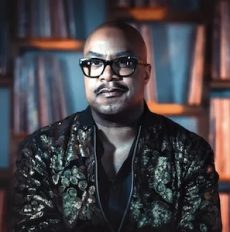
NICHOLAS PAYTON & NEW WORLD ORDER
More Posts: adventure,club,genius,jazz,music,preserving,restaurant,travel,trumpet
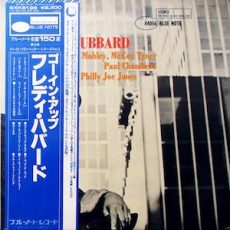
Requisites
Goin’ Up ~ Freddie Hubbard | By Eddie Carter
Submitted for your approval to begin this morning’s discussion is a marvelous release by Freddie Hubbard, Goin’ Up (Blue Note BLP 4056/BST 84056). It hit the stores in 1961 and is the trumpeter’s follow-up to his debut, Open Sesame, a year earlier. Pianist McCoy Tyner was on that earlier album and is back for Hubbard’s second effort. The remaining members of this excellent ensemble are Hank Mobley on tenor sax, Paul Chambers on bass, and Philly Joe Jones on drums. My copy is the 1979 Blue Note Masterpiece Selection Series Japanese Stereo reissue (BST 84056 – GXK 8126) by King Record Company.
Side One kicks off with Asiatic Raes by Kenny Dorham. Philly Joe makes the introduction, segueing into the quintet’s brisk melody. Freddie starts things off with a vigorous solo; then Hank proceeds with passionate fire next. McCoy responds enthusiastically, followed by Paul’s splendid bass lines. The closing statement is a lively exchange between Philly Joe and Freddie ahead of the quintet’s fade out. Hank Mobley’s The Changing Scene begins with the front line’s collective melody. Hank opens with a laid-back reading, then gives way to Freddie’s leisurely pace next. McCoy takes the final interpretation preceding the theme’s restatement.
Karioka by Kenny Dorham is an uptempo joyride that swings from the ensemble’s opening chorus into Freddie taking charge in the first interpretation. Hank is right on his heels, and then McCoy comes in for a spirited statement. Philly Joe ends with a fierce attack until the ending theme dissolves slowly. Side Two kicks off with A Peck A Sec by Hank Mobley. The group gets right to work on the upbeat melody. Freddie launches into a lively opening statement; then Hank ignites the second reading. McCoy raises the temperature in an exciting performance. Philly takes over for a short solo leading to the song’s finish.
I Wished I Knew by Billy Smith is the album’s only ballad, and McCoy introduces it softly, ahead of Freddie’s tender melody. Hank opens the solos with a poignantly beautiful interpretation. McCoy follows with a delicately pretty solo, then Paul gives a thoughtfully sensitive statement, and Freddie adds a gentle comment preceding a reflective ending. Blues For Brenda is Freddie’s tribute to his wife, and the trio makes the introduction ahead of the quintet’s relaxing theme. Freddie takes the first solo; then Hank steps into the spotlight. McCoy is up next, and Paul walks comfortably toward the ensemble’s conclusion.
Alfred Lion produced Goin’ Up, and Rudy Van Gelder was the recording engineer. The reissue’s sound quality is stunning, with an outstanding soundstage that transports the musicians to the sweet spot of your listening room. Freddie Hubbard would become one of the best jazz trumpeters during the sixties and a name to be reckoned with. His Blue Note albums as a leader and sideman are considered some of the best in his discography. For those seeking an excellent example, I invite you to check out Goin’ Up by Freddie Hubbard. It’s a tremendous album you won’t be able to listen to just once and definitely merits consideration for a spot in any jazz library!
~ Open Sesame (Blue Note BLP 4040/BST 84040) – Source: Discogs.com © 2023 by Edward Thomas Carter
More Posts: choice,classic,collectible,collector,history,instrumental,jazz,music,trumpet
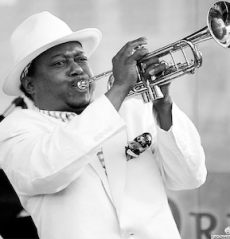
KERMIT RUFFINS & THE BBQ SWINGERS
Halloween Special
American jazz trumpeter, singer, composer, and actor from New Orleans, Louisiana. He has been influenced by Louis Armstrong and Louis Jordan and says that the highest note he can hit on trumpet is a high C. He often accompanies his songs with his own vocals. Most of his bands perform New Orleans jazz standards though he also composes many of his own pieces.
More Posts: adventure,club,genius,jazz,music,preserving,travel,trumpet
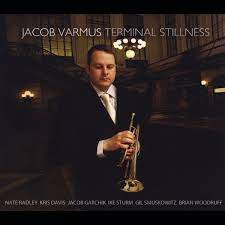
Daily Dose Of Jazz…
Jacob Varmus was born on October 6, 1973 in San Francisco, California. He first heard the trumpet’s call when he was two years old and ten years later had a trumpet of his own. He began winning top marks at all the California Music Educators’ Association festivals for his work as soloist and chamber musician.
Evolving parallel to his love of music was a talent for using language artistically thru poetry, critical essays, and autobiographical stories. In high school he won awards for poetry and sports journalism as well as music. His first year of college at the University of Iowa, Jacob studied poetry closely with MacArthur grant recipient Jorie Graham and classical trumpet virtuoso David Greenhoe.
An initiation to the music of John Coltrane sent Varmus to focus on jazz. In 1994 he moved to New York City to finish his BFA at the New School Jazz program. There he received timeless lessons from a long list of artists including Arnie Lawrence and Billy Harper. Here he became known to his peers and elders as a composer of harmonically intricate yet compellingly simple and striking tunes.
By his senior year he was being commissioned by the Jazz Composers’ Collective to write a suite combining jazz quintet with string quartet. It featured Ted Nash and Frank Kimbrough. He went on to enroll in composer workshops, receiving a further commission for jazz quartet.
As an educator he is on the faculty of the New York Jazz Academy. Trumpeter and composer Jacob Varmus continues to pursue his highly melodic yet rigorous music.
More Posts: bandleader,cornet,history,instrumental,jazz,music,trumpet


